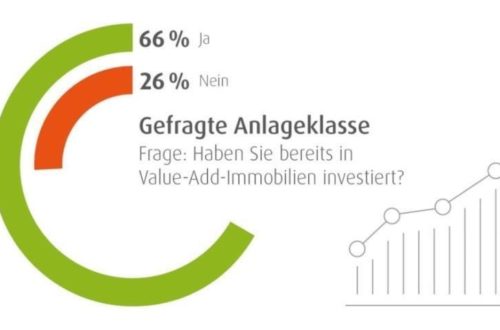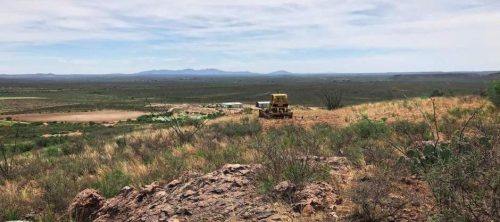
Platinex Acquires Muskrat Dam Project With Potential For Lithium-Bearing Pegmatites; Expands Shining Tree Gold And W2 Copper-Nickel-PGE Projects
Since the acquisition, Fred Breaks PhD Pgeo, a renowned expert on lithium pegmatite deposits, also being founder of Frontier Lithium (FL.V, market cap C$495M) and having discovered Frontier’s Pakegama Lake lithium deposit and Separation Rapids (Avalon Advanced Materials, AVL.TO, market cap C$64M), both in Ontario, has agreed to come in as a technical advisor. This bodes well for exploration potential in my view, when such a big name in the lithium exploration space wants to spend his time on this project. As Breaks, advisor Ike Osmani and Chairman Jim Trusler each have decades of experience in the geology of Northwestern Ontario, with Trusler also having lithium experience with the Georgia Lake lithium project, Muskrat Dam should be in good hands.
Besides all this potential lithium excitement, renewed enthusiasm for the Ring of Fire after the acquisition of Noront by Wyloo Metals could also provide a substantial catalyst for Platinex in 2023 regarding their W2 project, if infrastructure development towards Eagle’s Nest (Wyloo’s high grade Nickel-Copper-PGM project) could advance in a meaningful way.
All pictures are company material, unless stated otherwise.
All currencies are in US Dollars, unless stated otherwise.
The company announced their latest acquisition, the Muskrat Dam Critical Minerals project, on December 29, 2022. After another round of staking, the size of the project currently stands at 12,924ha, and is located on greenstone belts in Ontario, about 125km northeast of Frontier Lithium’s flagship PAK lithium project.
The Muskrat Dam project hosts potential for an entire suite of metals, ranging from Cu-Ni-PGE, gold, chromite to lithium. More specific, a major northwest-trending zone at Muskrat Dam is called the Axe Lake deformation zone (ALDZ), which shows the potential to host lithium-bearing pegmatites. Other operators like Inco have completed historical exploration in the 1970s and 1980s, but the area has seen little modern exploration, which is why Platinex was keen on acquiring it. At first sight, this new asset seems to imply a diversifying away from more traditional commodities like gold, nickel and copper, but it actually is in line with the general Platinex strategy of acquiring projects:
– low cost terms
– large scale acquisitions in Ontario in well understood belts/areas
– existing technical expertise of the project based on past work with other operators provides a good advantage.
– flow through eligibility
– existing historical work by good operators like Inco
The deal terms to acquire full ownership through an earn-in option agreement were pretty modest for a potential lithium property:
Payments:
– C$25,000 paid in cash on closing
– C$25,000 paid in shares within 60 days of closing
– C$25,000 paid in shares on the 1st anniversary
– C$75,000 paid in shares on the 2nd anniversary
– C$100,000 paid in shares on the 3rd anniversary
Work expenditures:
– C$100,000 spent by 1st anniversary
– C$100,000 spent by 2nd anniversary
– C$100,000 spent by 3rd anniversary
Milestone Payments:
– C$50,000 paid in cash upon completion of a successful prospecting and evaluation program confirming lithium grades exceeding 1%
– C$250,000 paid in cash or shares (min. $75,000 in cash) upon completion of an NI 43-101 mineral resource estimate on the Muskrat Dam Project
In case Platinex manages to find pegmatites with 1% Li grades or better, Muskrat would cost them at most only C$125k payments after one year, plus C$100k in exploration costs. This is an absolute bargain IF Muskrat indeed features substantial lithium-bearing pegmatites, as most lithium projects changing hands usually have at least a zero added to the numbers outlined above.
It will be fascinating to see this project being explored and sampled, as lithium-bearing pegmatites are extremely valuable these days, but at the same time relatively easy to find at surface as they often outcrop and are usually fairly large and recognizable (I even heard stories of geologists spotting them from helicopters at great heights). Ayers, a geologist who mapped the Muskrat Dam Lake greenstone belt in 1969, described the white pegmatites in his report as dikes, sills, and lenses that commonly occur between Axe Lake and the Morrison River.
According to Ayers, the pegmatites have a maximum crystal size of 15 cm, and one of the pegmatite dikes, on a small island in the Severn River at the entrance of Axe Lake, contains fractured black tourmaline crystals up to 10 cm long. The white muscovite-bearing pegmatites have also been intersected in a historical drill hole (DDH43455-0) located in the southeastern part of the property, about 10km away, indicating the potential scale of mineralization at Axe Lake.
The main objective of the initial exploration activity at the Muskrat Dam Project will be to map and sample the white pegmatites on the Axe Lake property to confirm the presence and grade of lithium mineralization. According to CEO Ferron, a budget for this should be about C$200-300k, such a program should take about 2 months combined for preparation and fieldwork, is planned at the moment, and will commence in the spring, and the first results should be expected shortly after it is completed one month later.
Platinex also added to its district-scale Shining Tree Gold Project which is located in the Abitibi region of Ontario, a world-renowned gold district, bringing the total claims to 225km2 now. The Shining Tree Gold Project covers a significant portion of the Ridout-Tyrrell deformation zone that trends as far west as Newmont’s Borden Mine, through the area of IAMGOLD’s Cote Gold Deposit, and across Aris Gold’s Juby Project. The company has a 100% interest in the Shining Tree Gold Project. As can be seen, Shining Tree is associated with the prospective Ridout-Tyrell Deformation Zone (RTDZ), which hosts several world-class gold deposits like Coté Gold (IAMGold) and Juby (Aris Gold):
A lot of reconaissance exploration has already been completed, including airborne magnetics survey and a LIDAR survey, enabling management to determine drill targets. According to CEO Ferron, Platinex still has to finish certain parts of fieldwork, and they are also waiting for feedback on drilling potential at the Ronda Mine. The plans for now are having a summer/fall drill program for drilling of up to 5,000m in two phases: 1) new targets in the new areas, and 2) expanding the Herrick resource and possibly drilling the former Ronda mine. According to the geologists there is far greater potential to make new discoveries by looking at the Ridout-Tyrell Deformation Zone (RTDZ). The central area appears to trend somewhat differently then thought previously, although probably all part of the RTDZ.
The exploration program in the Target #1 area will be able to verify/confirm the link between the Herrick deposit and interpreted splays (zones spreading out) off the RTDZ. Since the acquisition from Alamos, another focus is the past producing Ronda Mine which has a similar setting to Herrick, i.e., N-S and finally (biggest potential) is the eastwest-trending RTDZ. A broad NE-striking deformation zone with strong iron carbonate alteration and quartz veining/stringers was observed this past summer by consulting geologist Ike Osmani (see blue dotted lines). It will be clear there is lots of mineralized potential, but the complex fault structures warrant thorough recon exploration.
As a reminder, Platinex already completed a 51 drill hole program a while ago at the important Herrick target (one of 7-8 target zones within Shining Tree), and hit gold at almost every hole, with highlights accounting for 7.15m @2.76g/t Au, 46.3m @0.65g/t Au, 7.2m @2.38g/t Au, 14.1m @1.2g/t Au and 12.2m @1.47g/t Au, all within open pit depths.
Mineralization at the Herrick target is open at depth, and management hopes to find more mineralization at depth, as lots of deposits in the Abitibi show these characteristics. After the recon program is completed, Platinex will be able to prioritize targets, and put together a drill program. According to CEO Ferron, this Phase 2 program will probably consist of 5,000m of drilling.
Besides Shining Tree, Platinex is also active on the W2 front. This project has also been expanded recently, covering approximately 17,665 hectares (176.6 km2 ) now at the southwestern extent of Ontario’s Ring of Fire. As a reminder, historical drilling by Inco and Aurora Platinum defined a 7.5 km folded corridor near the centre of the land package where widespread near-surface CuNi-PGE mineralization was identified in widely spaced holes that returned mineralized intercepts of up to 220 metres, all starting near surface. These highlighted results for the property were certainly impressive:
- 6 m @0.56% CuEq or 0.96 g/t PdEq (LH-01-06)
- 6 m @ 0.45% CuEq or 0.771 g/t PdEq including 17 m of 1.08% CuEq or 1.86 g/t PdEq (LH-01-05)
- 42 m @ 1.02% CuEq or 1.8 g/t PdEq including a high grade 4.5 m section of 4.52 g/t PdEq (LH-01-02)
- 61m @ 1.01% CuEq or 1.73g/t PdEq
- 91m @ 1.63% CuEq or 2.80g/t PdEq
- 42m @ 1.02% CuEq or 1.76g/t PdEq
The results weren’t just impressive en pretty economic, the corresponding collars seem to cover a 25km long trend for the Cu-Ni-PGE targets, making this indeed a potential district play for those metals.
Keep in mind, Wyloo recently acquired nearby Noront (NOT.V) for its high grade Eagle’s Nest Ni-Cu-PGE deposit, for C$616.9M after a bidding war with a formidable competitor: BHP. Their resource stands at 20Mt @ 1.4%Ni, 1.0%Cu, 1.02g/t Pt and 3.3g/t Pd, which is world class grades. For comparison, assume that Platinex manages to delineate a hypothetical mineralized envelope of say 2,000x200x50m, multiplied with a density of 2.75t/m3, this would generate a 55Mt. At an average CuEq grade of for example 0.6-0.7%CuEq this would be a very interesting addition for Wyloo in my view. As the combined targets cover a much larger area, the mineralized potential in theory is much larger as well.
As BHP is known for doing extremely thorough due diligence on their transactions, it seems certain they saw compelling reasons to bypass the usual Ring of Fire objections, as this area still has been underdeveloped due to lack of infrastructure, which in turn has to do with certain First Nations bands (not the majority of bands) who remain protective of the land of their ancestors. Notwithstanding this, it seems most of the bands want to move forward now, and as the Ring of Fire is viewed as one of the most promising mining opportunities in Ontario for more than a century, it hopefully only is a matter of time now before the last opposing bands join the majority which vows for responsible economic development of the region. Wyloo takes the bands and the ESG subject very seriously, something that has been lacking in the recent past for sure, so it might not take too long before there could be a breakthrough.
Ring of Fire Metals, the fully owned and renamed (formerly Noront) subsidiairy of Wyloo, signed a MOU with the Webequie First Nation on December 7, 2022, outlining a framework for collaboration on the proposed development of Eagle’s Nest. The MOU details how the two parties will work together to progress ongoing exploration activity in the region as well as negotiations on a partnership agreement for the proposed Eagle’s Nest mine. I view this first MOU as a clear indicaton for the sincere intentions of Wyloo towards all First Nations bands to make the Ring of Fire work in the best way possible for all stakeholders.
Platinex outlined their exploration strategy for W2 in the summer of last year, after having analyzed historical exploration/drilling data, including airborne geophysical surveys and 10,000m of drilling by Inco and Aurora Platinum.
Exploration program highlights:
- Infill drilling to establish the continuity of the historically-defined 7.5 km long widely-spaced CuNi-PGE mineralization corridor (see the dotted line called “PGE Reef”) in the central part of the western W2 land package. This program will include petrographic and preliminary bench-scale metallurgical studies on the disseminated sulfide mineralization;
- Drill testing several high conductance-high magnetic susceptibility geophysical anomalies identified in a 2008 VTEM survey over the eastern portion of W2;
- Carrying out a ground gravity survey over the ultramafic intrusion to detect potential chromite mineralization in the northeast part of the western W2 claims; • Conducting petrographic and or preliminary bench-scale metallurgical studies to justify additional drilling along strike of the Fe-Ti-V mineralization in the northwestern part of the W2 claims.
At the centre of the property, a program of systematic step-out drilling will enable the Company to determine the continuity of mineralization and potentially expand historical resources as per the standards of NI 43-101. Currently, at least seven zones of significant Cu-Ni-PGE mineralization have been identified at wide spacing. For example, drill holes LH-01-05 and LH-01-06, which are located 4 km apart with no intervening drill holes, contain both wide sections of lower grade Copper Nickel Palladium Platinum mineralization and narrow sections of higher grade Cu-Ni-Pt-Pd mineralization. The historical drilling suggests a high level of continuity in the Cu-Ni-PGE mineralization. Maxwell plate modelling of geophysical anomalies will be carried out to assist with selecting final drill hole locations and orientations. Mineral exploration permit applications are ongoing in relation to the proposed work programs with drilling planned for the winter 2022/23 field season. As we have arrived in this winter season now, I asked CEO Ferron what the current status of the drill permits is. He answered that he expects the W2 drill permits very soon.
After raising C$1.93M in May of last year, C$1M still remains in the treasury, so Platinex will have to go to the markets in the not too distant future again, especially with several drill programs and other exploration coming up. The company has strong backers, so I don’t expect this to be an issue, especially as a new bull market seems to be initiated very recently, with lots of metal prices turning a corner, including the ones Platinex is focusing on.
Conclusion
After expanding and exploring the W2 and Shining Tree projects in 2022 in order to define the best possible drill targets, Platinex somewhat surprised the markets with the acquisition of a potential lithium-bearing pegmatite project called Muskrat Dam, located in a vast, underexplored region. Armed with one of the most knowledgeable geologists regarding lithium projects, Dr Fred Breaks, Platinex seems to have created a fair chance for itself to step on the ever-accelerating train called lithium, as lithium carbonate prices surpassed the US$80,000/t threshold a few weeks ago. I am very curious what results will come out of their sampling/trenching program at Muskrat Dam. Stay tuned!
I hope you will find this article interesting and useful, and will have further interest in my upcoming articles on mining. To never miss a thing, please subscribe to my free newsletter at www.criticalinvestor.eu, in order to get an email notice of my new articles soon after they are published.
Disclaimer:
The author is not a registered investment advisor, and currently has a long position in this stock. Platinex is a sponsoring company. All facts are to be checked by the reader. For more information go to www.platinex.com and read the company’s profile and official documents on www.sedar.com, also for important risk disclosures. This article is provided for information purposes only, and is not intended to be investment advice of any kind, and all readers are encouraged to do their own due diligence, and talk to their own licensed investment advisors prior to making any investment decisions.
Swiss Resource Capital AG
Poststrasse 1
CH9100 Herisau
Telefon: +41 (71) 354-8501
Telefax: +41 (71) 560-4271
http://www.resource-capital.ch
Telefon: +41 (71) 354-8501
E-Mail: mo@resource-capital.ch
![]()



